ELECTRIC, WITH AN EDGE
Although telephones are no longer in high demand, this does not affect telephone pole transformers since telephone pole transformers have a lot of purposes. When it comes to the pole mounted transformer connections, there are plenty of them, Pole-mounted transformer installation takes time and accuracy because telephone pole transformer explosions do happen.
With the help of DAELIM, a professional telephone pole transformer manufacturer in China, you will be able to understand all these topics.
Furthermore, DAELIM aims to assist you with your purchase decision as well.
But before going through what telephone pole transformers are capable of, it is important to know the basics first.
Electric Pole Transformer | Single Phase Transformer
-Learn the fundamentals of Electric Pole Transformers, including What is pole mounted distribution transformer, pole-mounted transformer specifications, pole-mounted transformer drawing, pole mounted transformer sizes and custom options.
A Complete Guide to Utility Electric Pole Transformer
-A Utility electric pole transformer is an electric utility distribution transformer mounted on a service pole. Check More.
A Complete Guide to Single Phase Distribution Transformer
-Consumers use electricity for different industries. Transformers work to make this happen as single phase distribution transformers.
How to choose and install rural distribution transformers
-The choice of the installation location of rural distribution transformers directly affects the economic operation and convenient maintenance of the transformer.
From the name itself, telephone pole transformers, this type of transformer belongs to the category of pole transformers, which are public distribution transformers that have the shape of a barrel.
Moreover, this type of transformer is mounted to a utility pole.
This means that this transformer is above-ground and can be safely exposed to the public but pole-mounted transformer installation must be observed to avoid telephone pole transformer explosion.

Distribution transformers are transformers that perform the very last voltage transformation in a distribution grid.
Moreover, distribution transformers have the ability to convert voltages that are used in transmission lines to one suitable consumer and commercial use. (Normally down to 240 volts)
Furthermore, they are widely used in transmission systems and electrical power distribution systems as well.
This type of transformer also has the highest power in terms of voltage-ampere ratings, and they also have the highest continuous voltage rating.
When it comes to the power rating, this is normally determined by what type of cooling methods are used in the transformer.
DAELIM Three-phase distribution transformers are used to hold electrical energy from the main distribution circuit to a minor distribution circuit.
This type of transformer is also able to transmit the current to a secondary distribution circuit.
Moreover, this reduces the voltage of the primary distribution circuit.
You may be wondering why telephone pole transformers are not power transformers, that is because power transformers are primarily used for transmission networks with a significantly higher voltage.
On the other hand, distribution transformers are focused on distribution networks that are defined by lower voltages.
Furthermore, distribution transformer ratings usually range from 11kV, 6.6 kV, 3.3 kV, 440V, 230V, etc.
Although the majority of transformers are commonly located at power plants and other high-voltage areas, there are a few types of transformers out there that can be safely placed in public.
However, this does not mean that all outdoor transformers are safe to be exposed outside.
This simply is not the case because most outdoor transformers do not pass the fire code of buildings and other establishments.
This includes telephone pole transformers since they can be located outdoors, but they are definitely not safe to make contact with.
This is also the reason why they are mounted to a pole instead of being mounted on the ground.
Speaking of ground, ground-mounted transformers or pad-mounted transformers also belong to the category of outdoor transformers since they are located outdoors but unlike pole-mounted transformers, this type of transformer is basically a transformer that sits on a solid pad that can be made out of wood or concrete.
Moreover, pad-mounted transformers are not like pole-mounted transformers that have a lot of pole-mounted transformer connections.
Pad-mounted transformers basically looks like a huge locker that is enclosed in a metal housing to prevent outside elements (e.g., people, animals, debris, calamities, etc.) from disturbing its operation.
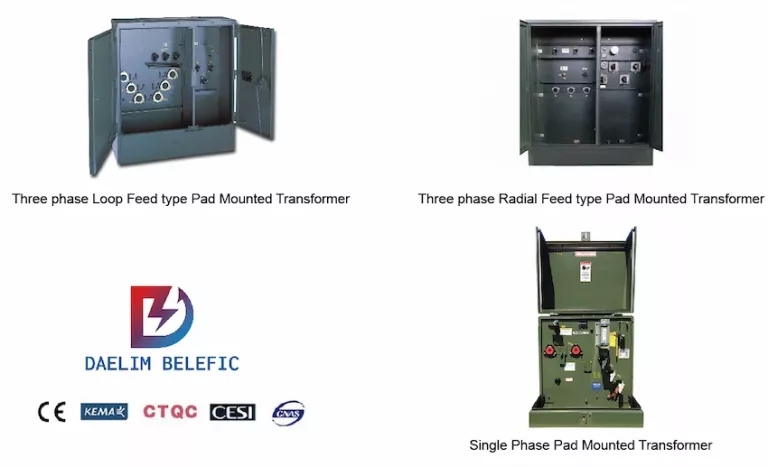
When it comes to pole-mounted transformers, as mentioned, they are distribution transformers that have a shape of a barrel, and they have numerous pole-mounted transformer connections linked to their bodies for distributing electricity to the consumers.
Pole-mounted transformers are also known for their single-phase functions.
A single-phase transformer is basically a type of power transformer that primarily uses single-phase alternating current or most commonly known as A.C.
This means that the transformer relies on a voltage cycle that operates in a unified time phase.
In other words, the ratio of the primary windings or input windings to secondary or output windings will determine the change in current.
So, what is a telephone pole transformer? A telephone transformer either means there is a telephone on a pole transformer or a pole transformer that has pole-mounted transformer connections associated with telephone lines.
This means that this type of transformer makes phone calls possible through their distribution networks.
A telephone pole transformer is a type of distribution transformer that is mounted on a pole or a tower, typically near residential or commercial buildings, to provide electrical power to local communities. It is also known as a pole-mounted transformer or a distribution transformer.
The transformer steps down the voltage of the power supplied by the high-voltage transmission lines to a lower voltage that is suitable for use in homes and businesses. The voltage is typically reduced from 7.2kV or 12kV to 120/240V or 277/480V, depending on the local distribution system.
The transformer is usually designed to withstand various weather conditions, including extreme temperatures, humidity, and wind. It is also designed to minimize noise and interference with other electronic devices.
Telephone pole transformers can vary in size and capacity, depending on the electrical load of the surrounding area. They are typically made of steel or aluminum and filled with oil to help with insulation and cooling. The oil also acts as a coolant and helps to dissipate heat generated by the transformer.
Overall, telephone pole transformers are a critical component of the electrical power grid, helping to distribute power to homes and businesses in a safe and efficient manner.
When it comes to how telephone pole transformers work, in normal cases, electricity will flow to the transformer on the high-voltage side of where it goes into a coil of wire.
Usually, there is a wound around an iron core.
As electricity flows through the coil, it is expected that it will create a magnetic field that will induce a voltage in the other coil.
Each coil basically has a different number of turns.
Although telephone pole transformers are small, this does not mean that it will include accessories like surge arresters or protective fuse links.
Self-protected transformers also include an internal fuse and surge arrester.
Other transformers also have these components that are mounted separately that are outside of the tank.
Telephone pole transformers are also considered as a static device.
Meaning, this transforms electrical power from one circuit to another without disturbing or changing the frequency.
They also have the ability to increase or decrease the voltage that is corresponding to the decrease or increase in the current.
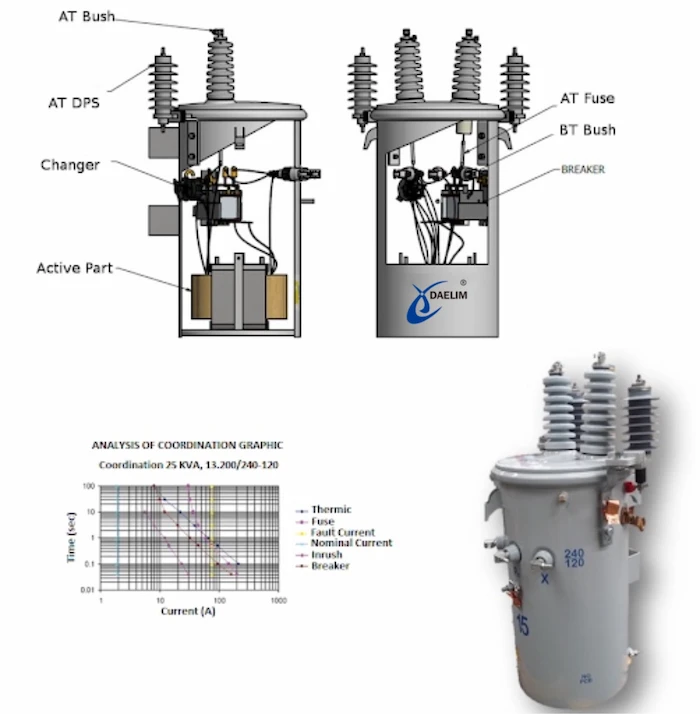
A telephone pole transformer also has the ability to convert higher voltage electricity that is carried by primary wires and lower the voltage for the consumers to safely use it. Guy wires are responsible for stabilizing utility poles.
Ground wires also run the entire length of the pole, and it also directs any electricity on the pole safely into the ground.
In terms of how much a telephone pole transformer cost, the average price for them is between $3,000 to $7,000 each, but this will depend on how much electricity is there to handle.
For the best quotes and services, DAELIM will gladly accommodate your needs.
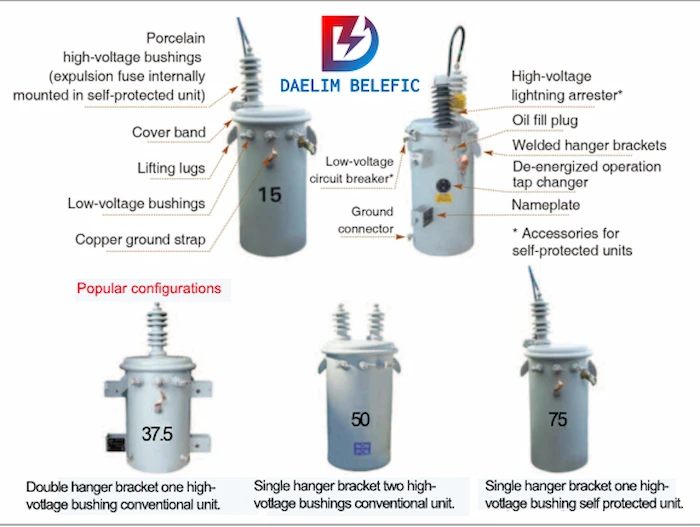
The cost of a pole-mounted transformer can vary depending on several factors such as the power rating, voltage level, and specific requirements for the application. Typically, pole-mounted transformers range in cost from a few thousand dollars to tens of thousands of dollars.
For example, a small pole-mounted distribution transformer with a rating of 25 kVA and a voltage of 120/240V could cost around $2,000 to $3,000. On the other hand, a larger pole-mounted transformer with a rating of 500 kVA and a voltage of 12.47 kV could cost between $30,000 to $40,000.
Other factors that can impact the cost of a pole-mounted transformer include the type of cooling method used, the type of insulation used, and any additional features or customizations required for the specific application.
It’s important to note that the cost of the transformer is just one factor to consider when selecting a supplier. Other factors such as the supplier’s reputation, delivery time, and quality of service should also be taken into account. It’s recommended to work with a reputable and experienced supplier that can provide a high-quality pole-mounted transformer that meets the specific requirements of the application at a competitive price.
Telephone pole transformers can have a life expectancy of up to 20 to 25 years or even more than 50 years if properly taken care of.
Just make sure to follow the advice that DAELIM has given.
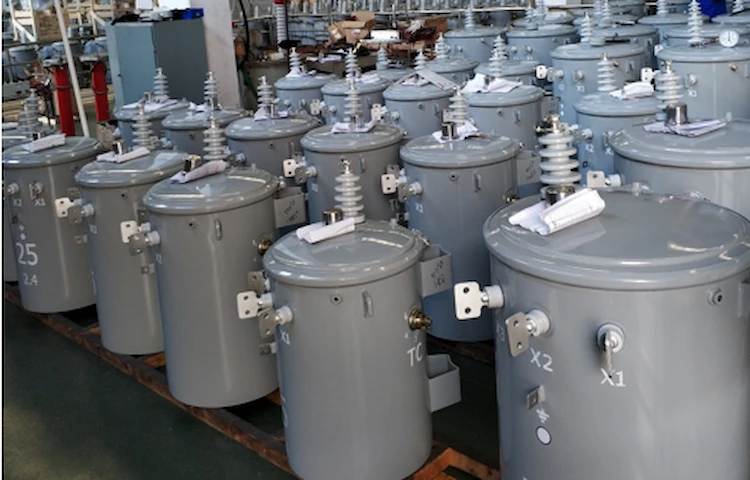
Although rare, telephone pole transformer explosions do happen for several reasons.
The most common reason why is because of lightning strikes during a strong rain or typhoon.
Lightning strikes can easily damage the wiring and transformer equipment, or the overall transformer itself.
Extreme weather conditions like strong winds and rain can also cause trees to fall on transformers, which can cause explosions.
A telephone pole transformer, also known as a distribution transformer, is used to lower the voltage of electricity from high voltage transmission lines to a level that can be safely used by homes and businesses. The transformer is mounted on a pole and is responsible for providing electricity to the local area, typically within a few blocks.
The purpose of a telephone pole transformer is to distribute electricity from the high voltage transmission lines to the lower voltage distribution lines that provide power to homes and businesses. The high voltage transmission lines carry electricity over long distances, but the voltage is too high for safe use in homes and businesses. The transformer reduces the voltage to a safe level, typically between 120 and 240 volts, which can be used by electrical appliances, lights, and other devices.
In addition to reducing the voltage, the transformer also provides some level of isolation between the high voltage transmission lines and the lower voltage distribution lines. This helps to protect against electrical surges and other voltage fluctuations that can damage electrical equipment or pose a safety hazard.
Overall, the purpose of a telephone pole transformer is to provide safe and reliable electricity to homes and businesses by stepping down the high voltage electricity from transmission lines to a lower voltage that is suitable for use in everyday electrical appliances and devices.
Power pole transformers, also known as pole-mounted transformers, can be dangerous if they are not handled properly. They contain high-voltage electrical components and are typically installed in outdoor environments, making them susceptible to weather-related damage and other hazards.
One potential danger associated with pole-mounted transformers is the risk of electrical shock. If someone comes into contact with a live wire or electrical component, they can suffer serious injury or even death. It is important to always assume that any electrical component is live and take appropriate safety precautions when working near or with pole-mounted transformers.
Another potential danger is the risk of explosion or fire. Pole-mounted transformers contain oil to cool and insulate the electrical components, and if the transformer becomes damaged, the oil can leak and ignite, causing an explosion or fire. This can pose a risk to people nearby as well as property in the surrounding area.
To minimize the risks associated with pole-mounted transformers, it is important to follow proper safety procedures and protocols when working with or near them. This includes ensuring that all workers are properly trained and equipped with appropriate safety gear, such as gloves and safety glasses, and that all work is carried out in accordance with relevant safety standards and regulations.
Overall, while power pole transformers can be dangerous if not handled properly, they are an essential component of electrical power systems and are designed and built to meet stringent safety standards and regulations. By following proper safety procedures and protocols, it is possible to minimize the risks associated with these transformers and ensure the safe and reliable operation of electrical power systems.
If you see a pole-mounted transformer sparking or smoking, it is important to take immediate action to ensure your safety and the safety of those around you. Here are the steps you should follow:
Stay away from the transformer: If you notice a pole-mounted transformer sparking or smoking, the first thing you should do is to stay away from it. Keep a safe distance of at least 50 feet or more, and do not touch the transformer or any wires or cables around it.
Call your utility company: Contact your local utility company as soon as possible to report the problem. They will be able to send a qualified technician to assess the situation and make necessary repairs or replacements.
Evacuate the area if necessary: If the situation appears to be very dangerous, such as if there are flames or an explosion, evacuate the area immediately and call 911.
Do not attempt to fix the problem yourself: It is important to never try to fix a problem with a pole-mounted transformer yourself. Only trained professionals should handle electrical equipment to ensure safety and prevent further damage.
By following these steps, you can help ensure your safety and prevent further damage to the electrical equipment. Remember, always treat electricity with respect and caution to avoid accidents or injuries.
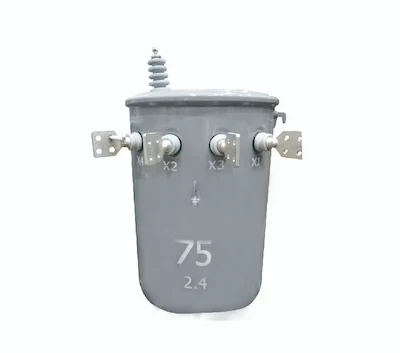
The amount of copper in a telephone pole transformer can vary depending on the size and type of transformer. Generally, transformers contain copper windings, which are used to transfer electrical energy between circuits. The copper windings are typically coated with insulation to protect against electrical shorts and other hazards.
Smaller pole-mounted transformers, such as those used for residential power distribution, may contain anywhere from a few pounds to several dozen pounds of copper. Larger transformers, such as those used in industrial or commercial settings, may contain hundreds or even thousands of pounds of copper.
While the amount of copper in a transformer may vary, it is generally a valuable metal that can be recycled or reused. In some cases, utilities or other organizations may offer incentives or programs for recycling old transformers or other electrical equipment to help reduce waste and conserve resources.
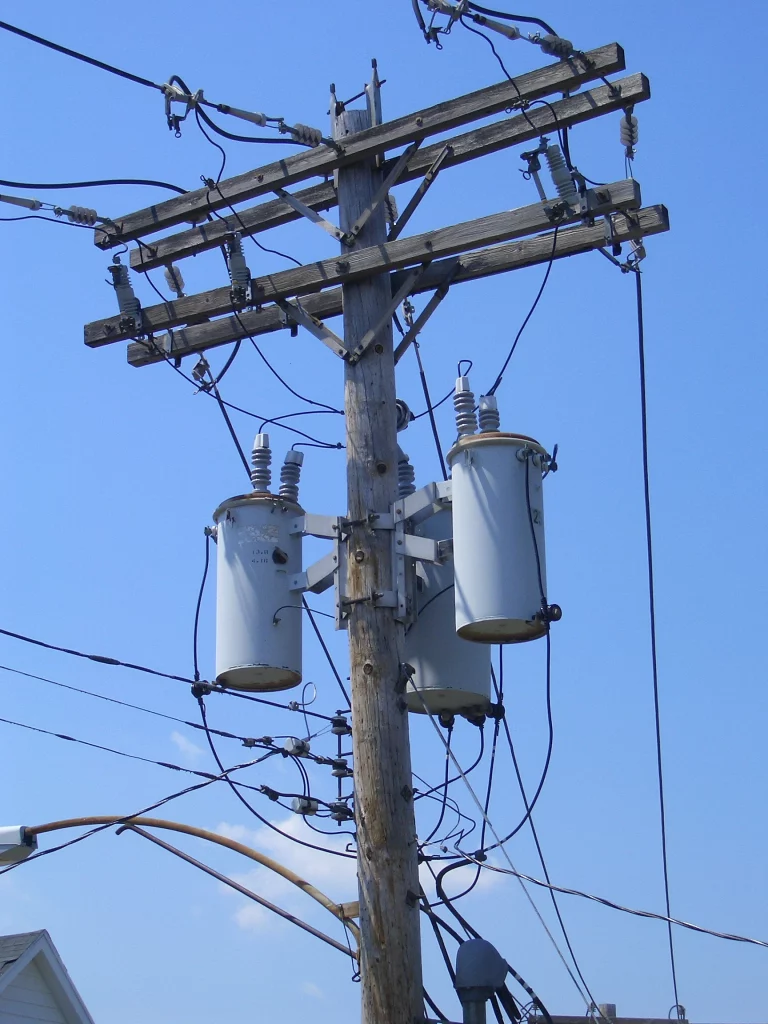
Yes, there are different types of pole-mounted transformers available depending on their application and requirements. Some of the common types of pole-mounted transformers include:
Distribution Transformers: These transformers are designed for distributing electrical power from the transmission system to the consumer’s premises. They are commonly used in urban and rural areas to provide power to residential, commercial, and industrial customers.
Single-Phase Transformers: These transformers are designed for single-phase power distribution systems commonly found in residential areas. They are used to step down the voltage from the primary distribution lines to the lower voltage levels required by households.
Three-Phase Transformers: These transformers are designed for three-phase power distribution systems typically used in commercial and industrial settings. They are used to step down the voltage from the primary distribution lines to the lower voltage levels required by businesses and industrial customers.
Autotransformers: Autotransformers are transformers in which the primary and secondary windings share a common winding. They are commonly used in low voltage applications where the voltage needs to be stepped up or down by a small amount.
Pad-Mounted Transformers: These transformers are designed to be installed on a concrete pad and are commonly used in underground power distribution systems. They are typically used in urban areas where overhead power lines are not practical or desirable.
The specifications of pole-mounted transformers may vary depending on their type and application. Some of the common specifications include voltage rating, current rating, power rating, temperature rating, and insulation class. It is important to consult with a qualified electrical engineer or supplier to determine the appropriate type and specifications of the transformer required for a specific application.
When you need to find more than just existing transformers, Daelim’s Transformer Service Center can help you design and produce distribution transformers that meet your unique needs.
We have our own factory and a professional team of engineers, which can design and modify application requirements that meet all your conditions.
ELECTRIC, WITH AN ENGE-- DAELIM BELEFIC
After filling in the contact information, you can download the PDF.